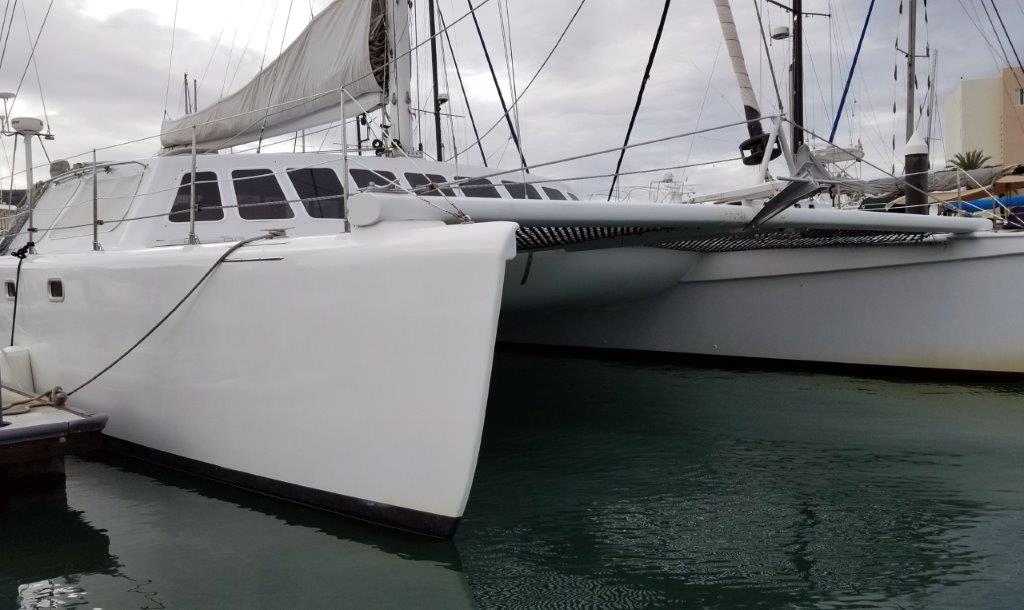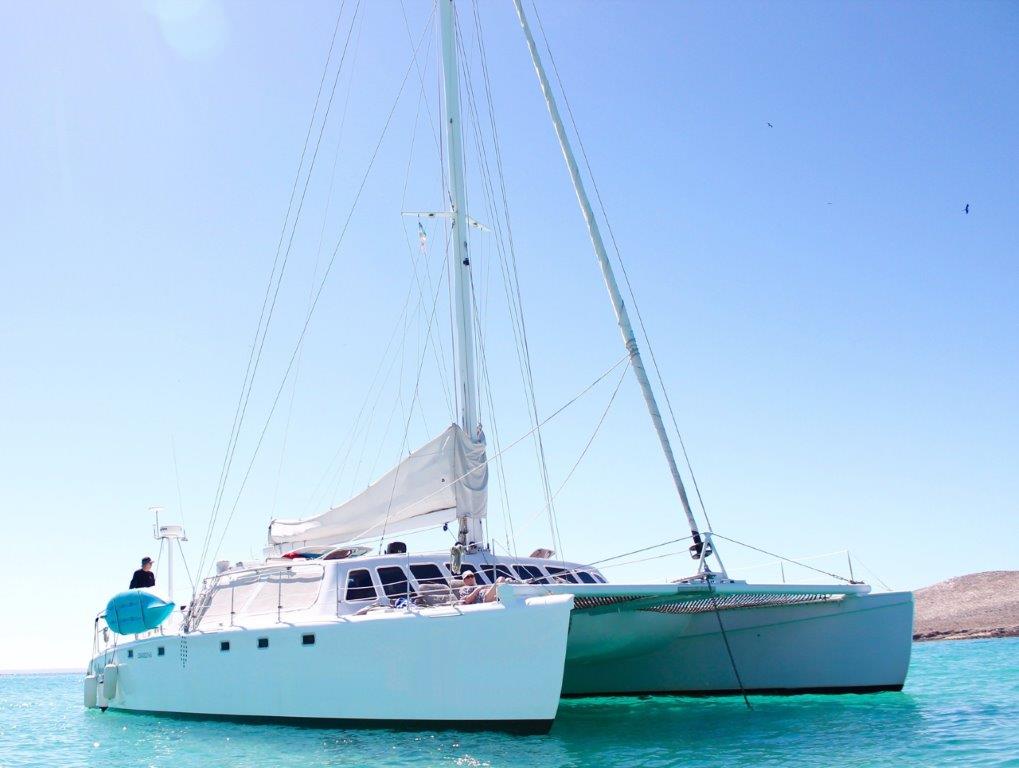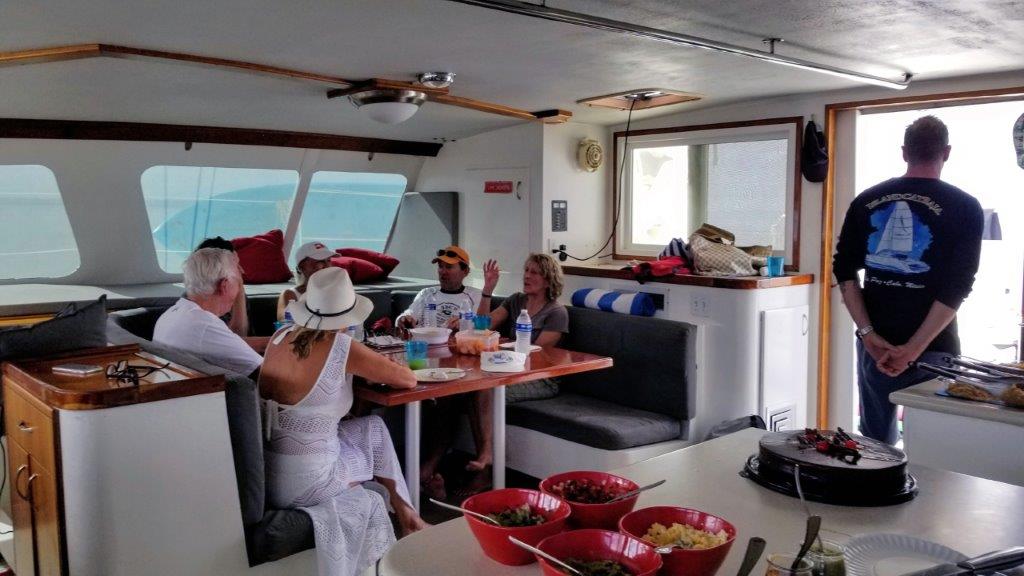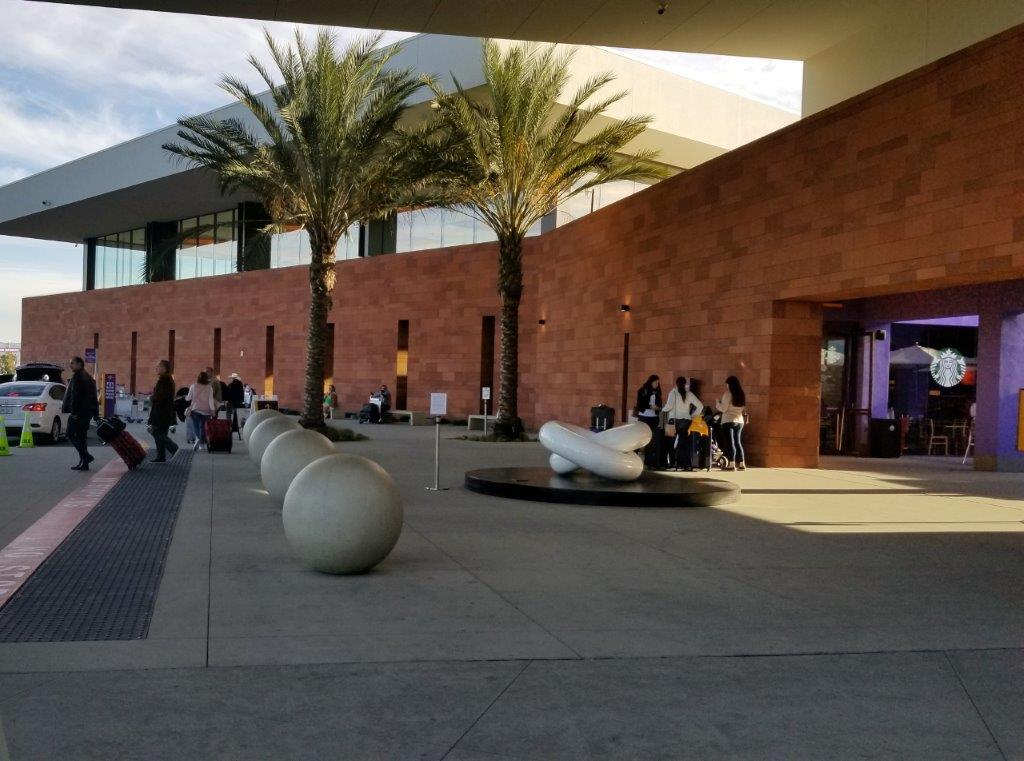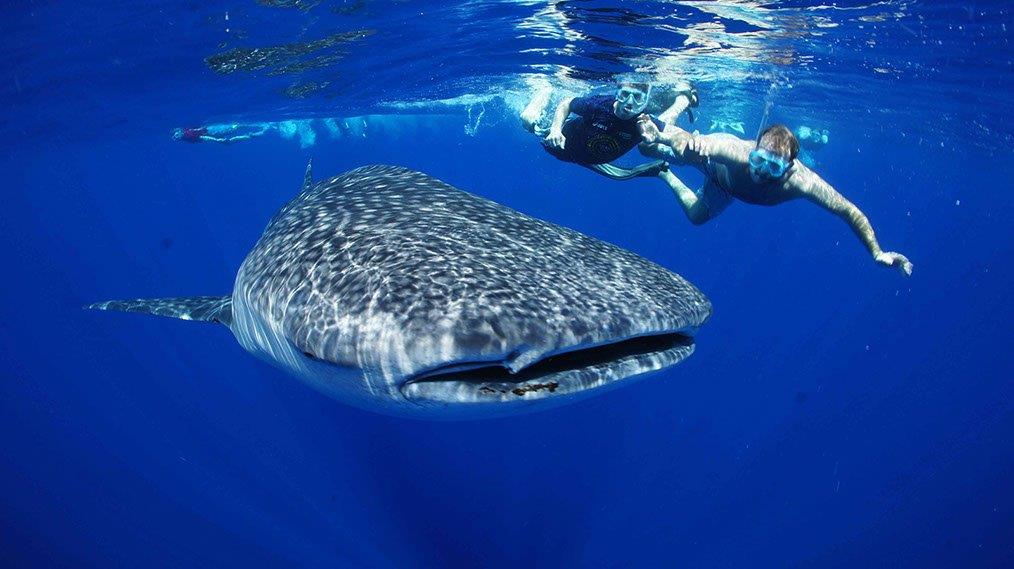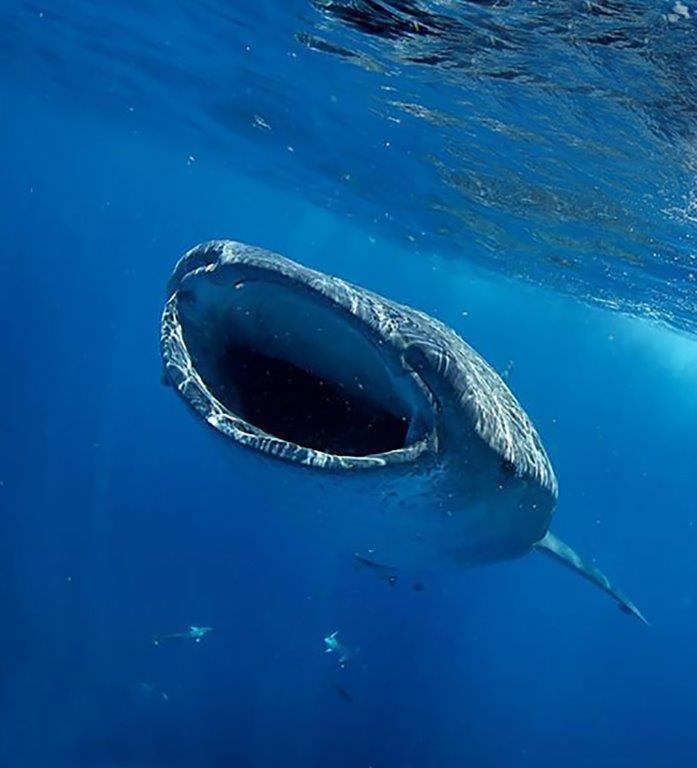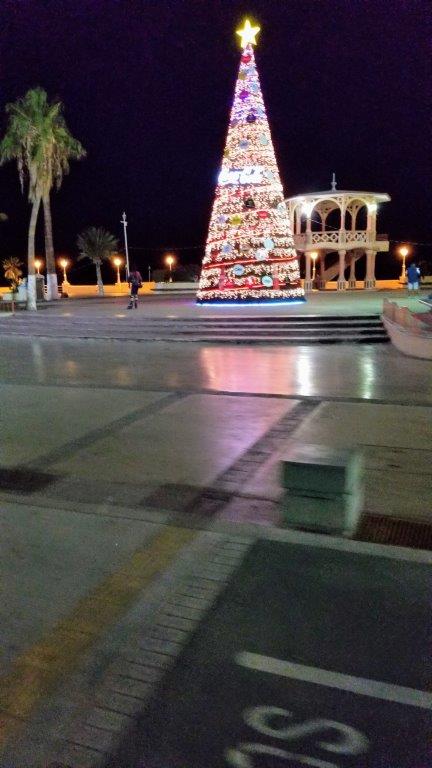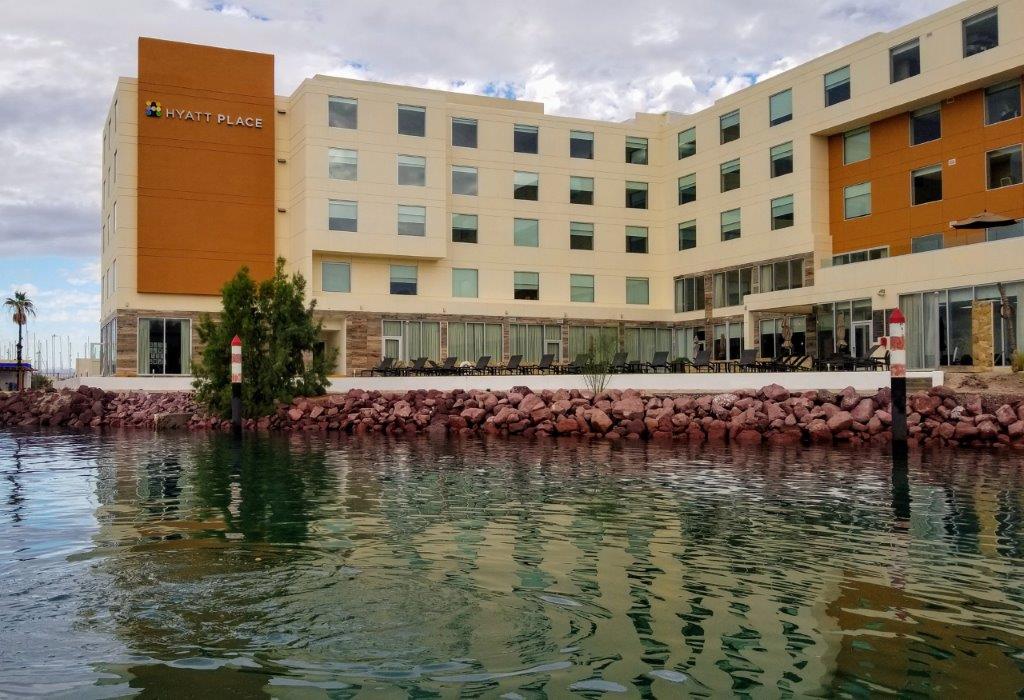Scooping plankton, the juvenile whale shark seemed to be swimming vertically in circles. This 25-foot-long polka-dotted wonder was even more memorable because he had a row of remoras on his tail. I pinched myself, forgot about being chilled, and wondered if I was dreaming. Everywhere I looked were whale sharks, appearing suspended in the water. This was the dream of every diver, was I lucky enough to have five days of this experience? Between the Mexican government and the weather, I had to be satisfied with their restrictive 30 minutes.
All I needed to do was stay out of their way. Not because they would hurt me, but because rules about not touching the whale sharks are the rules. But my incredible dream had a rude awakening when, after 30 minutes, I was told I had to get out of the water. Secretaría de Medio Ambiente y Recursos Naturales, known as SEMARNAT, rules the Bay of La Paz.
For divers, snorkeling with whale sharks can be equivalent to summiting Mount Everest for climbers. When skies are sunny, wind calm, and waves flat, the plankton levels rise, and the first 17 boats, ready and loaded with snorkelers, vie for the opportunity to swim with these gentle giants for a mere half-hour. Staying in the zone, but without snorkelers in the water, is permitted for two hours, but that’s not quite the same. The Bay’s whale shark population, estimated at plus-or-minus 125, is primarily juveniles. La Paz’s weather conditions can be as unreliable as on the peak of Everest — you can win big, but you can also lose. And that huge differential will either put you on top of the world or leave you incredibly disappointed.
I’ve dived much of the world searching for whale sharks. Every dive operator knew to call me when a pod was heading in their direction. Marc Bernardi, then owner of Aquatic Adventures, remembered, and I was on his next scheduled dive trip to the Galapagos where they happen to be seeing whale sharks.
Near Darwin’s Arch, my first whale shark encounter simply whetted my appetite. As I clung to a reef in strong current, barnacles biting through my gloves, a whale shark appeared like a shadow, then swam out of sight.
A few years later, I went with my group of dive buddies (we called ourselves the “Chicken Divers”) to Holbox to check out a rumored late-summer migration. Wading through the surf to board a panga, we motored about an hour before we saw the whale sharks. Four of us took turns in the water watching them as they approached us from all directions. (You can read about that adventure in the October 2004 issue of Undercurrent.)
When we returned the following year, we were rewarded with giant mantas co-mingling with the whale sharks — and unfortunately, a mass of other people. The Undercurrent article had brought thousands of divers, pangas from Isla Mujeres, and stricter government regulations.
Last year, after receiving an email from Baja Charters, stating it offered the premier Baja whale shark expedition, I signed up for five days in December. Owner Terry Neal, a personable American expat, cautioned me about December weather, which can be cold and rainy, with rough water and limited visibility. He suggested staying at the Hyatt Place at the marina, rather than the fancier adjacent resort of Costa Baja. Hyatt Place offered a $59 nightly rate when I booked in August, as well as a great breakfast.
I told the front desk I’d need a pickup by their 8:30 a.m. golf cart for the five-minute shuttle to Costa Baja’s marina, where the Baja Cat was docked. It’s a 54-foot-long by 30-foot-wide Northwest catamaran that shuttles folks from Cabo San Lucas to La Paz, and places in between.
The cabin has a nice-sized kitchen and dining table, with toilets and two hot showers down a few steps. A couple of my friends who were staying in Cabo took Baja Charter’s shuttle bus to meet me and along with a Colorado couple and their adult daughter, we cruised to designated zone 1.
The motor from the dock to zone 1 is about 30 minutes. That area is the only one where 4 people are allowed in the water for the limited 30 minutes. They can stay in zone 2 and 3 for two hours, but not get in water. The zones are clearly marked to licensees, but not to visitors.
Then we transferred from the catamaran to a panga to search 15 minutes for the whale sharks until they arrived. There were so many! In the 50-foot visibility, I could see their huge open mouths approaching me as they scooped plankton through their baleens. Trevally pilot fish escorted them, while massive schools of anchovies huddled along their sides, seeking protection from jacks that darted in and out to feast on them.
La Paz, home to a cluster of low-lying hotels and a growing number of snowbird and ex-pat retirees, sits on perpetually-tanned flatlands along the Sea of Cortez. A land spit known as El Mogote, covered entirely by housing developments, parallels La Paz’ shore, with a drop-off reaching 30 feet. Currents sweep plankton from the bottom of the Sea of Cortez, meaning the whale sharks have a great source of food in this protected harbor. Females also seek these shallow waters to give birth. The whale sharks we saw were estimated to be about 20 years old.
After our exciting encounter, Chef Scott Gesdalh had blended margaritas for everyone, plus chips with salsa and guacamole, as we boarded the catamaran. A full open bar was also an option. I wish I hadn’t chowed down when I found out later there was also going to be a buffet lunch of chicken and beef tacos, fresh fruit soaked in rum, more margaritas, and a chocolate cake from Walmart (La Paz’ finest bakery).
As the seven of us relaxed on the sundeck, we reminisced about our incredible encounter, not knowing we had experienced a record-breaking day — Captain Chris Miller reported that we snorkeled with 20 whale sharks. While we were snorkeling, the panga driver watched a humpback breech. Mariana Padilla, a University of La Paz marine biologist on board with us, shared a dorado sighting. She told us La Paz-tagged whale sharks have been found as far afield as Thailand’s Andaman Sea.
SEMARNAT is the Mexican government agency devoted to promoting the protection, restoration and conservation of the country’s ecosystems. This agency, which monitors and controls the whale sharks, has recently tightened its grip. While there are 120 licensed boats, only the first 17 that call SEMARNAT that morning is assigned the 30-minute time slots. If a boat is late, its departure time is delayed by three hours. The fine for not having a license in the whale shark zones is $10,000. Boats can remain in zones 2 and 3 for two hours, but no one is permitted in the water. This “iron grip” agency claims to have stopped long-lining and shark finning in the Sea of Cortez. That claim is strongly disputed by everyone I talked to in La Paz.
Returning to the marina around 2 p.m., my choice of staying in a convenient, inexpensive hotel was about to bite me. I had nothing to do — Baja Charters’ whale-watching tours never leave the Bay.
La Paz is no longer a sleepy little town –it has totally renovated its waterfront Malecon, placing aquatic sculptures about every 100 yards. While Hyatt Place offers hourly complimentary shuttle service to the city center, I’m not much of a sightseer or shopper. My choice would have been time spent on the water. I walked around town on my first day, ice cream in hand, but there were zero tourists and the historic, colonial-style Los Arcos hotel was closed and dilapidated – it felt like the local economy was taking a hit. Another option to stave off boredom might have been staying at the Costa Baja Resort, which offered restaurants, a spa, pool and fitness center.
Horrors, there would be no whale sharking the next day. Heavy rains were predicted for La Paz. Baja Charters refunded in full for any lost days or planned another dive activity. In my case, I was offered the opportunity to dive in Cabo Pulmo, a coral reef considered to be the pride of the Sea of Cortez. But only locally-licensed boats are permitted the Park’s dozen sites. (Liveaboards, usually headed to Socorro, have to use Cabo Pulmo operators.) Baja Charters partnered with Cabo Pulmo Beach Resort to offer its divers the ground transportation, meals, drinks, open bar, and dive equipment that’s given to hotel guests. Terry Neal made arrangements for his shuttle to take me on the two-and-a-half-hour drive from La Paz on a dirt two-lane road that was under construction.
Divemaster Alex guided the panga with a tractor for our beach entry. I dived with a couple from Nevada and woman from Alaska. Designated a marine preserve in 1995, Cabo Pulmo is one of North America’s west coast three coral reefs/
. The hard coral I saw was scattered primarily by sea fans and staghorn. I finned through numerous schools of jacks and yellow snapper, as well as colorful parrotfish, a moray eel, and a mature, algae-covered hawksbill turtle. Sadly, bull sharks, known to prey on these schooling fish, did not appear. Each of our dives were limited to 50 minutes. While the other divers wore shorties in the 78-degree water, I covered mine with a full-length 3-mil.
After my two dives, I ran into Terry Neal’s assistant, who said he was upstairs in the resort’s restaurant. I had a drink with some chips and guacamole and chatted with him from our outdoor table overlooking Cabo Pulmo’s rugged coast. A former CEO of multinational companies, author and now a widower, Neal lives two hours away in Cabo San Lucas. He says Baja Charters is just plain fun for him, and he has surrounded himself with a capable customer-service team who did a good job making sure his clients’ needs are met.
Neal has just taken possession of the Baja Seeker, a 96-foot McQueen yacht, which he just re-introduced as Pacifica, a five-cabin liveaboard that offers diving, snorkeling, fishing, kayaking and paddle boarding, as well as surround sound and a Jacuzzi, and he is currently working on obtaining a permit to dive with schooling hammerheads. SEMARNAT rules and Terry told me that he has applied for a permit to dive with them next year.
While I was diving in Cabo Pulmo, the skies over La Paz dumped enough rain to flood the streets. I didn’t think much of the impact that torrential rain would have the next day while snorkeling again with the whale sharks. Lacking other clients, Baja Charters arranged for me to go solo in the panga with driver Leo Ramirez. Once again securing the first time slot at 9 a.m., we spent a lot of time searching for the sharks. The first one we saw was really cruising; the next two juveniles also seemed to be on a mission. I got in the water and swam as fast as possible for very brief, although close encounters. There went my theory that juveniles swim vertically as we had noted the previous day.
I have only seen adult whale sharks in Holbox cruising along. I mistakenly assumed that since these were considered juveniles that they swam slowly and more vertically. I was wrong, it was just a sunny nice day and they were not in any hurry. The previous day’s storm had submerged the plankton, and the whale sharks had descended.
When I heard from kite surfers and sailors that high winds of 25-plus knots were forecast for the weekend, I called Califia Airlines to see if I could change my flight to return the next day. I did so at a whopping cost of US$5. As great as the Hyatt staff treated me, I was tired of eating soup and sandwiches in the area set aside for breakfast buffet diners. The food was good, but there was no dining room.
With no more whale shark sightings planned during my remaining two days, I took a cab to the airport and headed back to Tijuana to overnight in San Diego and extend my vacation a bit. I did not stay in SD to extend my vacation. I couldn’t make a flight connection. It would be worthwhile for others to do so.
This incredible adventure is only for those who can “go with the flow” — Mexico’s strict restrictions and weather volatility during the October-to-April whale shark season can be challenging, but that’s when the big guys are there, so it will always be a crap shoot. For me, it was a lifetime highlight, albeit interspersed with hours of boredom. Baja Charters runs a great operation, but the whale-watching boats don’t go out in bad weather, nor do they leave the Bay of La Paz. I highly recommend you go with a group of friends or dive shop to charter a Baja Charters boat for five days, and when conditions for whale sharks aren’t great, snorkel with the sea lions at Espiritu Santo, dive at Cabo Pulmo, and find the schooling hammerheads and mantas.
COMPASS: I took a 90-minute flight from Tijuana to La Paz via Califia Airlines for $203 (see my sidebar about the Cross-Border Xpress), and the cab from airport to Hyatt Place was around $24 . . . There are no direct flights from the U.S. to La Paz; Delta, American and Alaska Airlines fly to San Jose del Cabo, and then it’s a two-hour car ride (or pricey private shuttle ride) to La Paz . . . My cost per day for all-inclusive diving and food was $285 plus tax . . . Hyatt Place on the marina was very convenient and nice, while nearby Costa Baja Resort is a more upscale, resort-type place at $175 per night . . . La Paz restaurants recommended to me included Oliva al Mare, Tres Virgenes, Sorstis, Anzuelo, Palermo´s Steak house, and the homemade ice cream at La Fuente . . .. . . Websites: Baja Charters — www.bajacharters.com; Hyatt Place in La Paz — www.hyatt.com/en-US/hotel/mexico/hyatt-place-la-paz/lapzl; Costa Baja Resort — www.costabajaresort.com; Cabo Pulmo Beach Resort — www.cabopulmo.com
STAR CHART
Experts *****
Beginners *****
Snorkeling ******
Accommodations Hyatt Place ****
Food **** Hyatt Place
Food ***** Baja Charters
Staff ***** Hyatt Place and Baja Charters
Customer Service *****
Experience? ******
Money’s Worth *****

